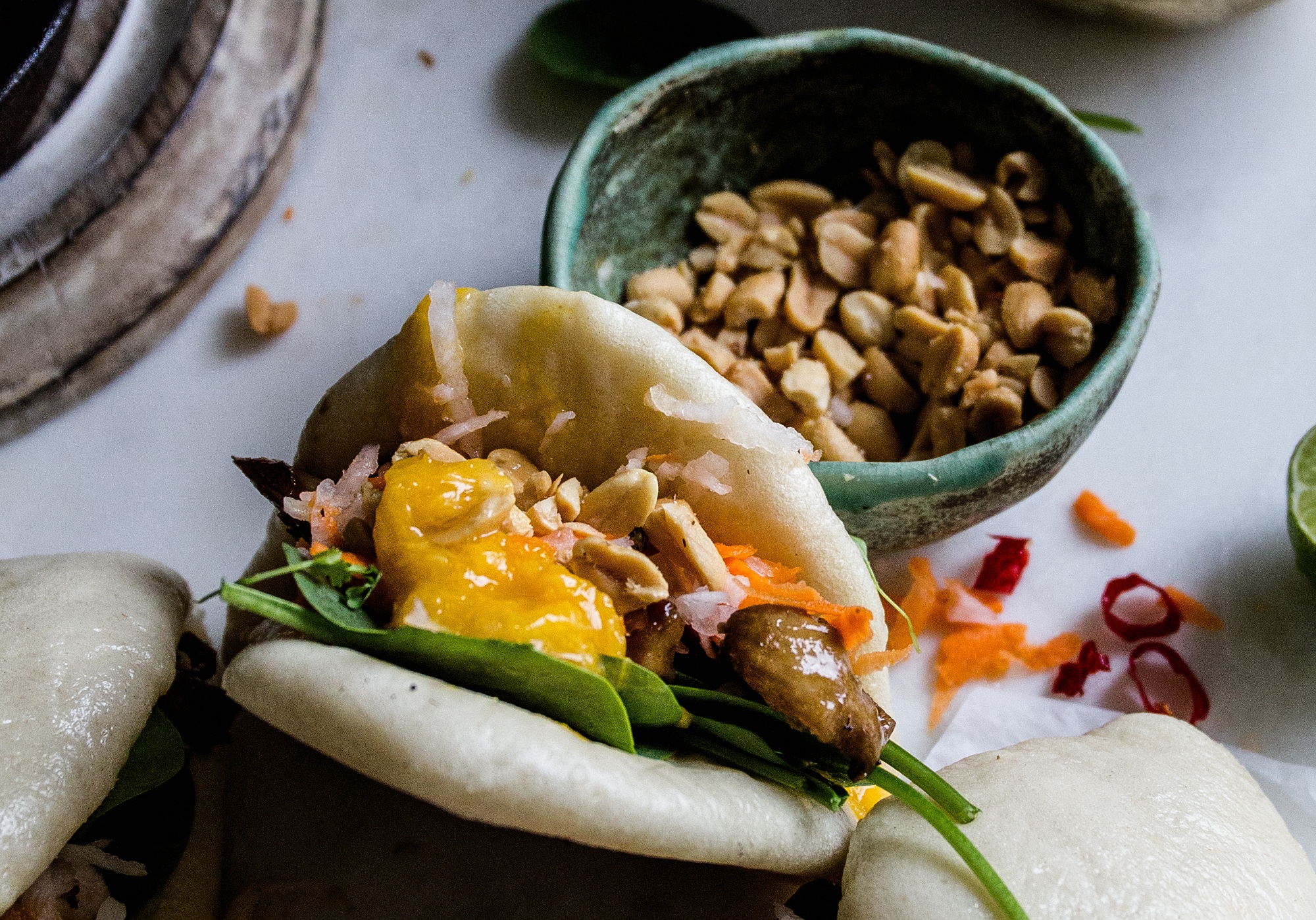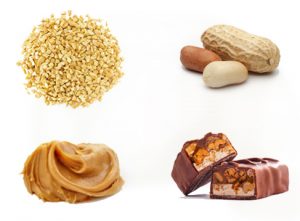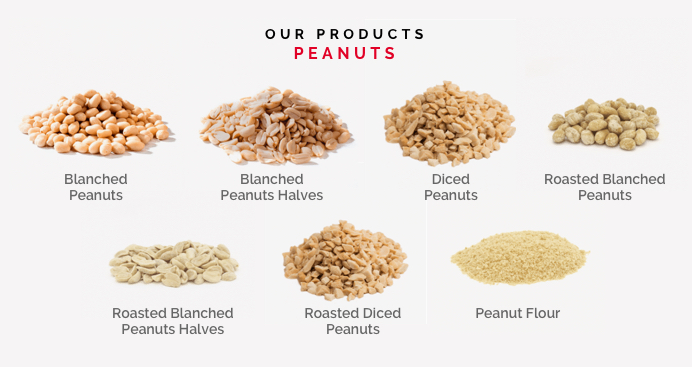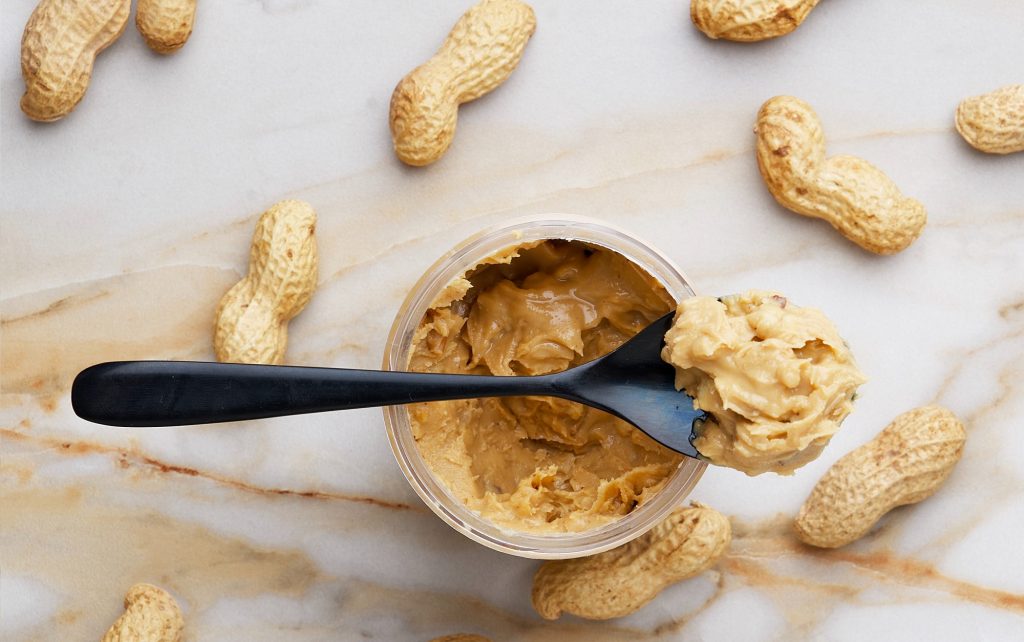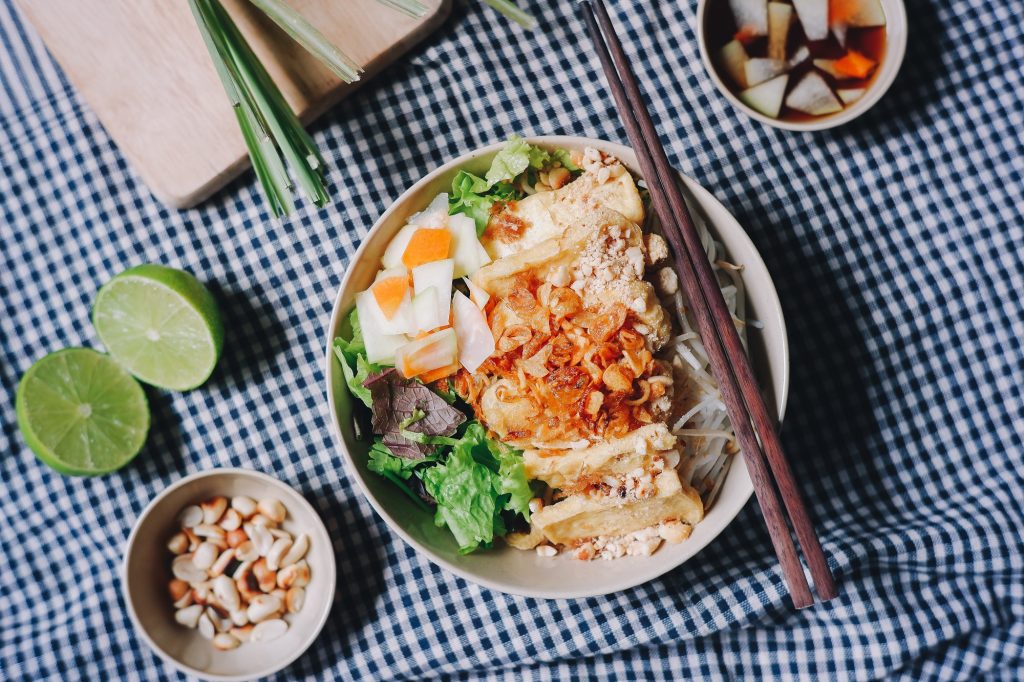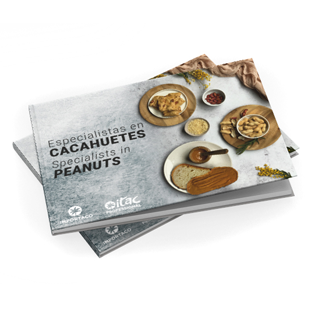According to the International Dry Fruit Council (INC), global peanut production has fluctuated between 37.1 and 43.2 million tonnes over the past five years. The largest producers are China, India, USA, Nigeria, Argentina, Indonesia and Senegal. Spain, even though it doesn’t export this product, has a real market presence in the nut handling and processing industry. In addition to this, peanuts are one of the most consumed nuts in our country along with almonds, nuts, hazelnuts, pistachios or sunflower seeds. According to the Statistics group Startista, more than 13 million kilos of peanuts were consumed in Spain in 2018. In this article we will review the uses of peanuts and their different varieties.
Peanut properties
Even though they are considered to be part of the nut family, they actually belong to the botanical family Fabaceae (legumes), the same group as chickpeas or lentils. For this reason, at a nutritional level, they are a natural source of high-quality proteins. 50% of their composition is fatty acids. Among them are oleic and linoleic acids and proteins (25%). Peanuts are also rich in fiber, niacin, B vitamins (especially vitamin B6), pantothenic acid and, above all, minerals. In fact, according to the Spanish Nutrition Foundation (FEN), peanuts provide us with phosphorus, potassium, magnesium and zinc.
Varieties of peanut and their manufactured products
There are different varieties of peanuts in the world. The most widely-cultivated ones are:
- Runner. A regular medium-sized grain, and covered with a reddish skin. This peanut variety is used to make peanut butter and to manufacture crocantis and coated confectionery products, as well as other uses.
- Virginia. This variety has larger grains and, due to its aroma, is used to make savoury snacks (with and without the shell).
- Spanish. Characterized by their small grain and reddish-brown skin, this variety of peanut is more oily, and is the perfect choice to prepare savoury products (without the shell), as well as butter, oil and confectionery products.
- Valencia. This strain is one of the most versatile and stands out for its sweet taste. It is used to make roasted and toasted snacks with its shell, as well as other savoury, fried and boiled snacks.
Do you work at the food industry? Are you looking for almonds, peanuts or nut pastes?
Processed peanut uses, formats and applications
Due to its flavor and applications in the food industry, peanuts can be processed in for consumption in different ways. The pods must be dried beforehand until they reach a safe humidity level for storage (up to 9%). Then, the grains are separated from the shells and are classified by size and intended treatment.
Once processed we can find several different formats of peanuts: natural, roasted, toasted or fried, without the shell (but with skin), bleached (without the shell) or in halves (splits). They can also be granulated, chopped, made into flour, or marketed as peanut butter, paste, oil, or extract.
Some of the products made with peanuts are:
-
- Peanut Butter. Peanut butter is a paste that is made with dry roasted peanuts. You can have up to 100% peanut content, according to the need or the manufacturer. They don’t contain artificial sweeteners, colors or preservatives, although some manufacturers may add salt, sugar or oil to stabilize the mixture. It is estimated that more than 50% of peanuts grown in the US are eaten in the form of peanut butter, especially in sandwiches, both for its delicious flavor and for being an alternative source of vegetarian protein.
- Peanut flour. Peanut flour is made with roasted, crushed and defatted peanuts. This flour is a good alternative for people with celiac disease (gluten allergy) and vegans. Peanut flour has a widespread use in the food industry for its pleasant taste and aroma. It is used to prepare snacks, which are baked like French fries, and also to enrich smoothies and thicken sauces.
- Peanut oil. This peanut by-product is used to fry, sauté, or add flavor. Peanut oil can be used at high temperatures and has a high smoke point. In addition, the food that’s cooked in it doesn’t absorb its flavor.
Peanut butter: Uses in professional kitchens
Peanut butter provides all the properties of this product in a concentrated form, and it’s a very practical solution in pastries and industrial cuisine in order to add flavour and texture to dressings, cakes, chocolates, smoothies, ice cream, rice, or pasta.
It may interest you: Nut butter in the food industry
A sample menu with peanut butter: first course, second course and dessert:
-
- Noodles with peanut dressing. The noodles are made with a base of sautéed soba or udon noodles, together with onion, broccoli, carrot, mushrooms, pepper and coriander. Add strips of sprinkled beef or tofu (in vegan dishes). The peanut butter is used, in this case, to make the sauce, blending this ingredient with olive oil, soy sauce, lemon juice, grated ginger, and sesame seeds.
- Chicken with spicy peanut sauce. Peanut butter is marketed with and without salt. With the former we can make delicious recipes like this one. The chicken is presented in tacos or on skewers, with a touch of pepper. The spicy peanut sauce is made with salted peanut butter, garlic, shallot, olive oil, soy sauce, chilli and lemon juice.
- Apple muffins and peanut butter. The idea of this recipe is to make fluffy, intensely-flavored muffins by adding natural apple. Peanut butter is used to prepare the topping, making a smooth dough when combined with cream cheese, milk, and icing sugar. For a finishing touch, you can use some chocolate-covered seeds.
Uses of peanuts in traditional international cuisine
As expert peanut proceducers, we know peanuts are used in dishes in every continent around the world. If you are thinking of adding exotic culinary creations to your restaurant’s menu, then peanut toppings can be of great help to you.
Some of the classic peanut dishes of Asian origin are Lo Mein noodles (whose key ingredient is sriracha sauce – Thai spicy chili sauce), Kung Pao prawns or Chicken Satay (you can use peanut butter for the sauce and also for the topping to finish off the dish).
Peanuts are used in the chicken and seafood ají dishes which are typical of Peru. They’re also used in Indonesian dishes such as gado-gado, pecel, karedok and ketoprak, which include vegetable salads mixed with peanut sauce. In Mali, peanut sauce is used to season a roasted chicken meat dish, although this seasoning is often consumed alone (or with pitta bread) for its high energy value. This recipe contains onion, garlic, peanut butter, carrot and cauliflower.
At ITAC Professional, as spelicialised nut suppliers, we distribute a wide range of peanut butters for the food industry, both with or without salt, made with raw peanuts with skin or with toasted peanuts. Check out our catalogue and discover all their many possibilities.
WANT MORE INFORMATION ABOUT OUR PRODUCTS? TAKE A LOOK AT OUR SPECIALISED PEANUT PRODUCTION CATALOGUE FOR THE FOOD INDUSTRY.

